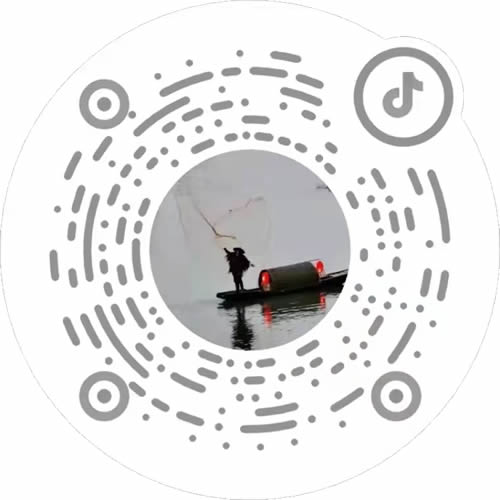1. that即可代表事物也可代表人,which代表事物;它们在从句中作主语或宾语,that在从句中作宾语时常可省略关系词,which在从句中作宾语则不能省略。而且,如果which在从句中作“不及物动词+介词”的介词的宾语,注意介词不要丢掉,而且介词总是放在关系代词which的前边,但有的则放在它原来的位置
1) The first doll say “mama”was invented in 1830.
[A] that it could
[B] could it
[C] it could
[D] that could
2) A solar day is the length of time the Earth to revolve once around the Sun.
[A] takes
[B] takes it
[C] which takes
[D] he takes
3) The period during when [A] people learned [B] to melt iron is called [C] the [D] Iron Age.
2. which作宾语时,根据先行词与定语从句之间的语义关系,先行词与which之间的介词不能丢
4) The second half of his voyage was by far the more dangerous part, he sailed round the treacherous Cape Horn.
[A] where
[B] of which
[C] during which
[D] that
5) To travel from England to Hope Corn had taken him nine months, the sailing time was 226 days. He had done what he wanted to accomplish.
[A] when
[B] which
[C] of which
[D] that
3. 代表物时多用which,但在带有下列词的句子中用that而不用which,这些词包括all, anything, much等,这时的that常被省略(见本节“四、关系代词的省略”)
4. who和whom引导的从句用来修饰人,分别作从句中的主语和宾语,whom作宾语时,要注意它可以作动词的宾语也可以作介词的宾语
6) Henry Ford is the person [A] which [B] is most responsible [C] for developing [D] the idea of mass production.
7) Human beings are social [A] animals whom [B] usually prefer not to live in [C] physical or psychological isolation [D] .
5. where是关系副词,用来表示地点的定语从句
8) The Everglades is a beautiful region of southern Florida the primitive past mingles with modern life.
[A] there
[B] where
[C] after
[D] in
9) The k
[A] when
[B] where
[C] why
[D] which
10) A metropolitan region [A] is defined as a central [B] city and the territory where [C] surrounds [D] it.
6. when引导定语从句表示时间
11) The next morning he came down to breakfast, he was beaming with the pleasure of a new, great discovery.
[A] as
[B] when
[C] because
[D] that
12) In a day few noble persons ever spoke to those of humble origins except to give an order, Jefferson went out of his way to talk with gardeners, servants, and waiters.
[A] whose
[B] during
[C] when
[D] of
13) Moreover, in the modern age human beings depend so much on machines, he had given men throughout the world new pride.
[A] when
[B] whether
[C] more
[D] ever
[注] 值得一提的是,表示时间“time”一词的定语从句只用when引导,有时不用任何关系代词,当然也不用that引导
By the time you arrive in London, we will have stayed there for two weeks. / I still remember the first time I met her. / Each time he goes to besiness trip, he brings a lot of living necessities, such as towers, soap, toothbrush etc.
7. whose是关系代词,修饰名词作定语,相当于所修饰成分的前置所有格
14) There was a teapot fashioned like a China duck out of open mouth the tea was supposed to come.
[A] which
[B] its
[C] that
[D] whose
15) Jackir Mcleans’s recordings have shown that he is one of the few [A] jazz musicians who [B] style of playing [C] has kept pace with the evolution [D] of modern jazz.
8. 当从句的逻辑主语是some, any, no, somebody, anybody, nobody, something, anything, everything或nothing时,常用there is来引导
16) I don't want to concentrate on anything worrying me.
[A] what is
[B] there is
[C] what
[D] there
二、非限定性定语从句:非限定性定语从句的作用是对所修饰的成分作进一步说明,通常和主句间用逗号隔开,将从
1. which引导的非限定性定语从句来说明前面整个句子的情况或主句的某一部分
2. 在引导限定性定语从句时,that有时相当于in which, at which, for which或at which
Attitudes towards daydreaming are changing in much the same way that(in which) attitudes towards night dreaming have changed. 人们对白日做梦的态度正在改变,这与人们对夜间做梦的看法的变化有非常相似之处。
I like the music for the very reason that(for which) he dislike it. 我出于某种原因喜欢这种音乐,而他恰恰与我相反。
We arrived the day that(on which) they left. 刚好我们到的那天他们走了。
3. 有时as也可用作关系代词
4. 在非限定性定语从句中,不能用that,而用who, whom代表人,用which代表事物
17) Ligaments(韧带), , hold organs of the body in place and fasten bones together.
[A] which are fibrous tissues
[B] they are fibrous tissues
[C] fibrous tissues that
[D] are fibrous tissues
18) The Little White House in Warm Springs was the Georgia home of President Franklin D. Roosevelt, there on April 12, 1945.
[A] who died
[B] died
[C] while died
[D] he died
19) The first United States citizen to become [A] a professional [B] sculptor was Patience Lovell Wright, which [C] works were executed in wax [D] .
三、定语从句结构错误
1. 缺关系词
20) The adder is a snake has [A] a relatively [B] stout body, a short tail [C] , and a flat head [D] .
2. 从句中缺成分
21) Traditionally, ethnographers and linguists have paid [A] little attention to cultural interpretations given to [B] silence, or to [C] the types of social contexts in which tends [D] to occur.
四、连接代词的省略
22) Most crocodiles will eat anything capture and overpower.
[A] can
[B] they can
[C] which can
[D] and
五、例题解析
1) D为正确答案。本句中的主句为“The first doll was invented in 1830”,“that could say ‘mama’”为定语从句,修饰主句中的名词(主语)“the first doll”。
3) A错。during是介词,它后面的关系代词只能用which(指人除外),which在此处指代“the period”,定语从句为“during which people…iron”,修饰主句的主语“the period”。
4) C为正确答案。
5) C为正确答案。
6) B错。改用who,which只能指物,指人时应用who,本句的定语从句修饰the person,关系代词who在从句中作主语。本句也可改用that,因为that也可用来指人,它可在从句中作主语或宾语,但which则只能指“物”。
7) B错。应改用who,因为这里所指代的是“human beings”,而且在从句中作主语,而whom只能用来作宾语。
8) B为正确答案。空白后是一个定语从句,从句中主谓宾齐全,关系副词where指代上面表示地点的名词region(地方,地区),相当于in which,即in the region,在从句中作地点状语。
9) B对。空白后为定语从句,从句中的主谓宾语都已齐全,where作从句中的地点状语,相当于in the joint,整个从句修饰“the joint”。
10) C错。改为which或that。这里是一个定语从句,修饰前面的the territory(区域),虽然被修饰成分表示一个地点,但若用where代替in the territory在从句中作地点状语,从句中便没有了主语,这显然不对。改用which后,便可由它作从句中的主语,代the territory;从句中的it代上文中的a central city。
11) B为正确答案。
12) C为正确答案。
13) A为正确答案。
14) D为正确答案。这里whose修饰名词短语“open mouth,” 这时“whose open mouth”一起作介词“of”的宾语。
15) B错。who应当在定语从句中作主语,而从句中已有主语style of playing(演奏风格),故应将who改为whose,用whose修饰style,指代上文中的人名,相当于his。
16) B为正确答案。
17) A对。空白处是which引导的定语从句修饰主句的主语ligaments,which作从句的主语,主句的主语(ligaments)和谓语(hold)被定语从句所隔开。
18) A对。本句是关
[1] [2] 下一页
系代词who引导的非限定性定语从句,who指代前面的被修饰成分President Franklin D. Roosevelt并在从句中作主语。
19) C错。应改用whose,修饰从句中的主语works,whose相当于his。
20) A错。本句已有谓语动词is,而后面又出现动词has,显然不合语法,故应在snake和has之间加上关系代词which或that构成定语从句修饰snake,which作从句的主语。
21) D错。本句“in which”中的which指代“social contexts”,which在从句中已经是介词in的宾语,这样从句中便没有了主语,故应在which后加代词it(代silence),即变为“in which it tends…”,用it作从句的主语,这样句子才完整。
22) B对。关系代词作限定性定语从句中的宾语时可以省略,本句被修饰词anything后就省去了“that”;C是不对的,首先,C中的which作从句的主语,而从句中的动词(作谓语)capture and overpower都为及物动词,可后面没有宾语,这样句子便不完整;其次,如果被修饰成分为不定代词(anything, all等),或修饰成分前有形容词最高级以及限定性较强的形容词修饰时(the very,the only,the same,the first,the last,the tallest),应使用关系代词that,而不用which。
上一页 [1] [2]













